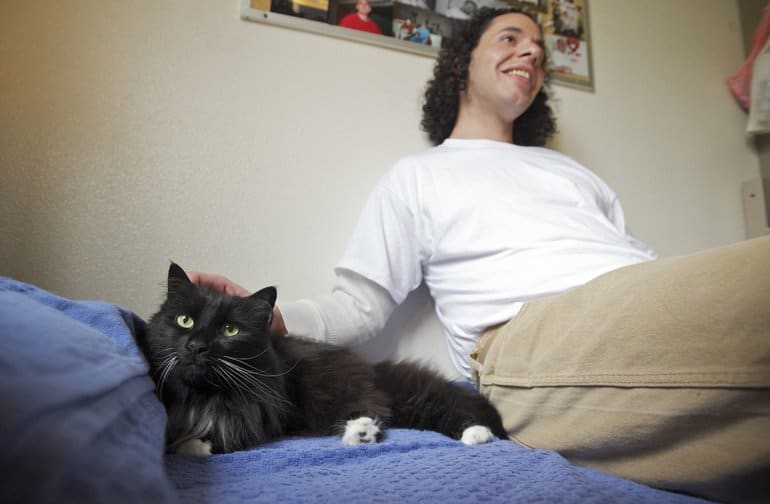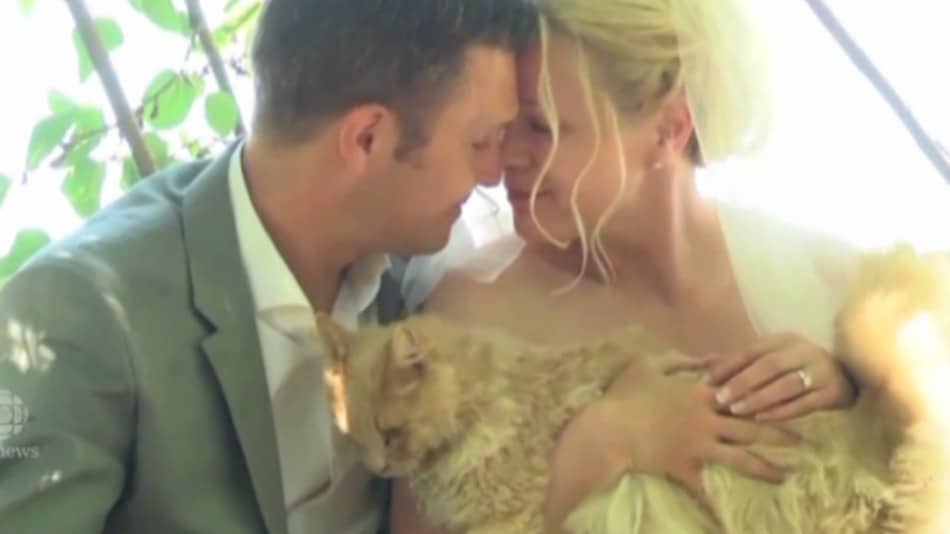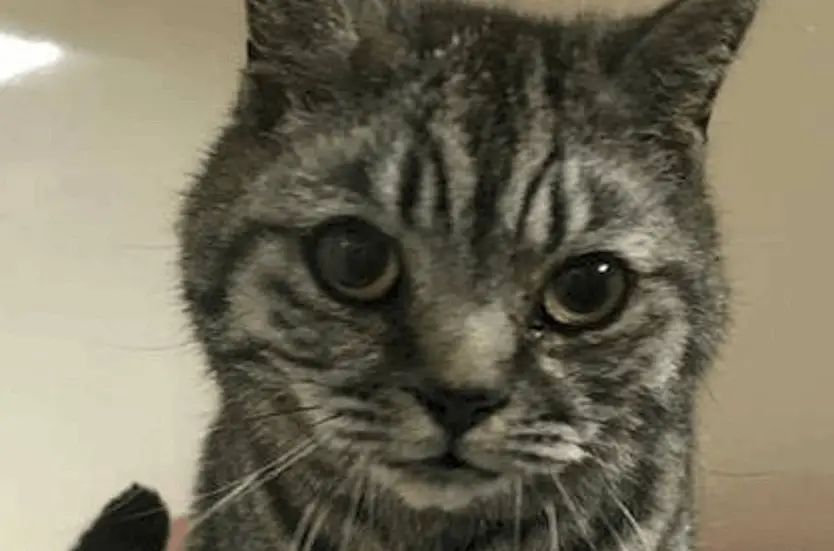Did you know a cat’s sense of smell is 14 times stronger than a human’s? This extraordinary olfactory ability plays a critical role in how cats communicate, especially through the use of pheromones. Pheromones are chemical signals that cats release to send messages to other cats. These signals can convey everything from territorial boundaries to emotional states. For cat parents and feline enthusiasts, understanding how cats use pheromones can provide valuable insights into their behavior.

Today, we’ll explore the different types of feline pheromones and their functions, explaining how cats produce and detect these chemical messengers. By the end, you’ll have a deeper appreciation for your cat’s unique way of communicating and practical tips on using pheromones to improve your cat’s well-being.
What Are Pheromones?
Pheromones are chemical messengers that trigger specific behaviors or responses in other cats. These chemicals are released through various means, such as glands, urine, and feces, and they play a significant role in feline communication.
Cats produce and release pheromones through specialized glands located around their body. These glands are primarily found on their cheeks, chin, forehead, paws, and even their urinary and digestive tracts. When a cat releases pheromones, it sends a message to other cats in the vicinity, influencing their behavior and emotional state.
While we aren’t able to smell these pheromones, they are highly detectable by cats, allowing them to communicate effectively in ways we can only begin to understand.
Types of Cat Pheromones and Their Functions
Facial Pheromones
Facial pheromones are released when a cat rubs its cheeks, chin, and forehead against objects, people, or other animals. This behavior, known as bunting, serves several purposes:
- Marking Territory: When a cat rubs its face against an object, it leaves behind pheromones that signal the object as part of its territory.
- Promoting Social Bonding: Facial pheromones help establish a sense of familiarity and safety, reducing anxiety and promoting social bonding among cats and other animals. Does your cat give you head-butts? They are bonding with you.
- Signaling Comfort: These pheromones convey a message of contentment and well-being, reassuring other cats in the environment.

Footpad Pheromones
Footpad pheromones are secreted from glands located in a cat’s paws. When a cat scratches a surface, it leaves behind scent trails that serve as markers for other cats:
- Marking Territory: By scratching, a cat leaves both visual and scent markers that signal ownership of a particular area.
- Communicating Presence: These pheromones inform other cats about the presence of the scent-marking cat, helping to establish social hierarchies and avoid conflicts.
Urine and Feces Pheromones
Urine and feces pheromones are used for a variety of communication purposes:
- Marking Territory: Cats often spray urine to establish territorial boundaries and signal their presence to other cats.
- Signaling Reproductive Status: Female cats in heat release specific pheromones in their urine to attract male cats.
- Conveying Information: Feces can also contain pheromones that provide information about the cat’s health and emotional state.
Alarm Pheromones
Alarm pheromones are released when a cat feels stressed or threatened. These pheromones serve as a warning signal to other cats, alerting them to potential danger:
- Signaling Danger: When a cat releases alarm pheromones, it informs nearby cats to be cautious and stay alert.
- Inducing Caution: Other cats that detect these pheromones may become more vigilant and avoid the area where the alarm pheromones were released.
How Cats Detect Pheromones
Cats have a specialized olfactory organ called the vomeronasal organ (VNO), located on the roof of their mouth. This organ is specifically designed to detect pheromones. When a cat encounters a pheromone, it may exhibit a behavior known as the flehmen response, where it curls its lips and opens its mouth slightly to expose the VNO to the pheromones.
You’ve likely seen your cat do this if they’ve ever smelled something and then made a funny face, with their mouth slightly open. (We often refer to it as a “stank face.”)

The VNO sends signals to the brain, allowing the cat to process and respond to the chemical messages. This unique sensory system enables cats to detect and interpret pheromones with remarkable accuracy, making it an invaluable component of their communication toolkit.
Understanding Cat Pheromones Can Help You and Your Cat
Managing Stress with Pheromone Products
Pheromone products, such as sprays and diffusers, can be used to manage stress and reduce unwanted behaviors in cats. These products mimic natural feline pheromones, creating a calming environment. For example, Feliway, a popular pheromone diffuser, releases synthetic facial pheromones that help reduce anxiety and promote a sense of security.
Reducing Unwanted Behaviors
Pheromone products can also be effective in addressing unwanted behaviors, such as scratching and spraying. By creating a familiar and comforting environment, these products can help deter cats from engaging in destructive activities. For instance, applying a pheromone spray to furniture can discourage scratching.
Promoting Harmony in Multi-Cat Households
In multi-cat households, pheromone products can help promote harmony and reduce conflicts. By using pheromone diffusers in common areas, cat owners can create a peaceful atmosphere that encourages positive interactions among their feline companions. This can be particularly beneficial when introducing new cats to the household.
Veterinary Use of Pheromones
Veterinary clinics often use pheromone products to calm anxious patients. By applying pheromone sprays or using pheromone-infused towels, veterinarians can create a less stressful environment for cats undergoing medical procedures. This approach helps improve the overall experience for both the cat and the veterinarian.
Tips for Using Pheromone Products
Cat owners can effectively use pheromone products by following these tips:
- Consistency: Use pheromone products consistently to maintain a calming environment for your cat.
- Placement: Position pheromone diffusers in areas where your cat spends the most time.
- Patience: It may take some time for the effects of pheromone products to become noticeable, so be patient and give it a few weeks.
Conclusion
Understanding how cats use pheromones to communicate can provide valuable insights into their behavior and emotional state. By recognizing the different types of pheromones and their functions, cat owners can better interpret their feline companions’ actions and create a more harmonious living environment. And, you can consider taking advantage of pheromone products to promote social bonding, reduce stress and unwanted behaviors, and improve your cat’s overall well-being.
So the next time you see your kitty making a stank face or giving you a head-butt, remember that they are just using their unique communication skills to show their love and establish their place in their environment!
The Catington Post is reader-supported. That means, if you make a purchase through links on our site, we may earn an affiliate commission. All images and names which are not the property of The Catington Post are the property of their respective owners.




